Overview
This article underscores the critical advantages of compact axial fans in the realm of electronics cooling. These fans play a pivotal role in enhancing thermal management, energy efficiency, and overall performance in electronic devices. The discussion elaborates on several key benefits, including:
- Improved airflow
- Cost-effectiveness
- Versatility across applications
- Significant technological advancements
Collectively, these factors are driving the increasing demand and market expansion for these essential cooling solutions within the electronics industry.
Introduction
The demand for effective cooling solutions in the electronics industry is surging, driven by the relentless miniaturization of devices and the imperative for efficient thermal management. Compact axial fans have emerged as a pivotal player in this landscape, offering a myriad of benefits that enhance performance while conserving space and energy. However, with numerous options available, what truly distinguishes these fans in terms of reliability, efficiency, and overall value? This article delves into the ten key advantages of compact axial fans, revealing how they can transform electronics cooling and adeptly meet the challenges posed by modern technology.
Gagner-Toomey Associates: Leading Provider of Compact Axial Fans for Electronics Cooling
Gagner-Toomey Associates stands as a prominent supplier of that are specifically engineered for the . By collaborating with top-tier manufacturers, the company provides that include compact axial fans, .
Recent statistics reveal that the market for compact axial fans is anticipated to expand from USD 1.2 billion in 2024 to USD 2.5 billion by 2033, indicating substantial growth. This expansion is propelled by the ongoing trend of , with the Asia-Pacific region projected to experience a CAGR of approximately 6.5% from 2025 to 2033.
Industry experts emphasize that compact axial fans are essential for enhancing , thereby ensuring the optimal performance and longevity of electronic components. guarantees that specifically designed to cater to their unique needs.

Space Efficiency: Compact Design of Axial Fans for Electronics Applications
Engineered to excel in confined spaces, are essential for where space constraints are prevalent. Their slender profiles enable seamless integration into a multitude of devices, ensuring that enhance the overall design and functionality rather than obstruct it. This proves particularly advantageous in densely populated environments such as server racks and in the use of compact axial fans for .
Engineers have noted that these streamlined designs optimize airflow and contribute to improved , which is critical for maintaining performance in high-density applications using compact axial fans. Recent trends in small fan design focus on enhancing and reducing noise levels, further solidifying their importance in modern electronic systems.
For instance, the DiaForce diagonal space-saving fan exemplifies how innovative engineering can meet the temperature management demands of while accommodating limited spaces. As the market for compact axial fans continues to grow, driven by the increasing miniaturization of electronic devices, the integration of these compact axial fans will remain a pivotal aspect for engineers aiming to deliver effective temperature management solutions.

Energy Efficiency: Cost-Effective Cooling Solutions with Compact Axial Fans
are engineered for optimal energy efficiency, leveraging that significantly reduce while enhancing airflow. This innovative design not only leads to but also diminishes the carbon footprint, establishing these devices as a for .
By integrating , organizations can realize substantial savings on energy expenditures over time. For instance, can achieve up to a 70% reduction in power consumption compared to traditional air conditioning units, resulting in considerable across various applications, including the regulation of electronics temperature.
Industry experts strongly advocate for the shift towards these technologies, underscoring their superior performance and cost-effectiveness relative to conventional cooling methods. As the demand for sustainable solutions escalates, investing in compact rotary ventilators not only advances environmental goals but also meets the economic imperatives of modern enterprises.
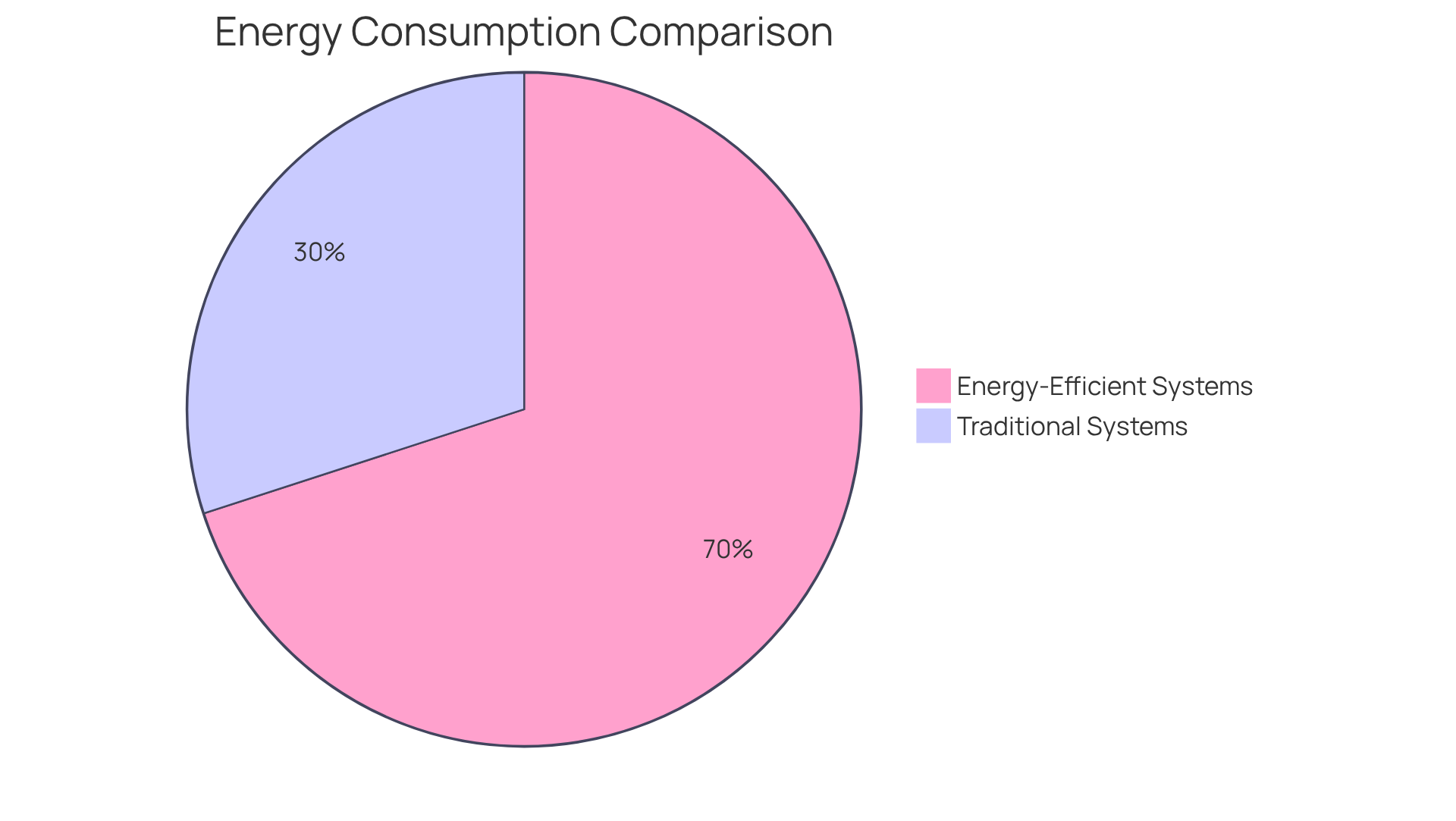
Improved Airflow: Maximizing Cooling Performance with Compact Axial Fans
Compact centrifugal ventilators are engineered to deliver , a critical factor for maintaining in electronic devices. Their innovative design facilitates , ensuring from essential components. This enhancement in airflow not only boosts but also significantly by .
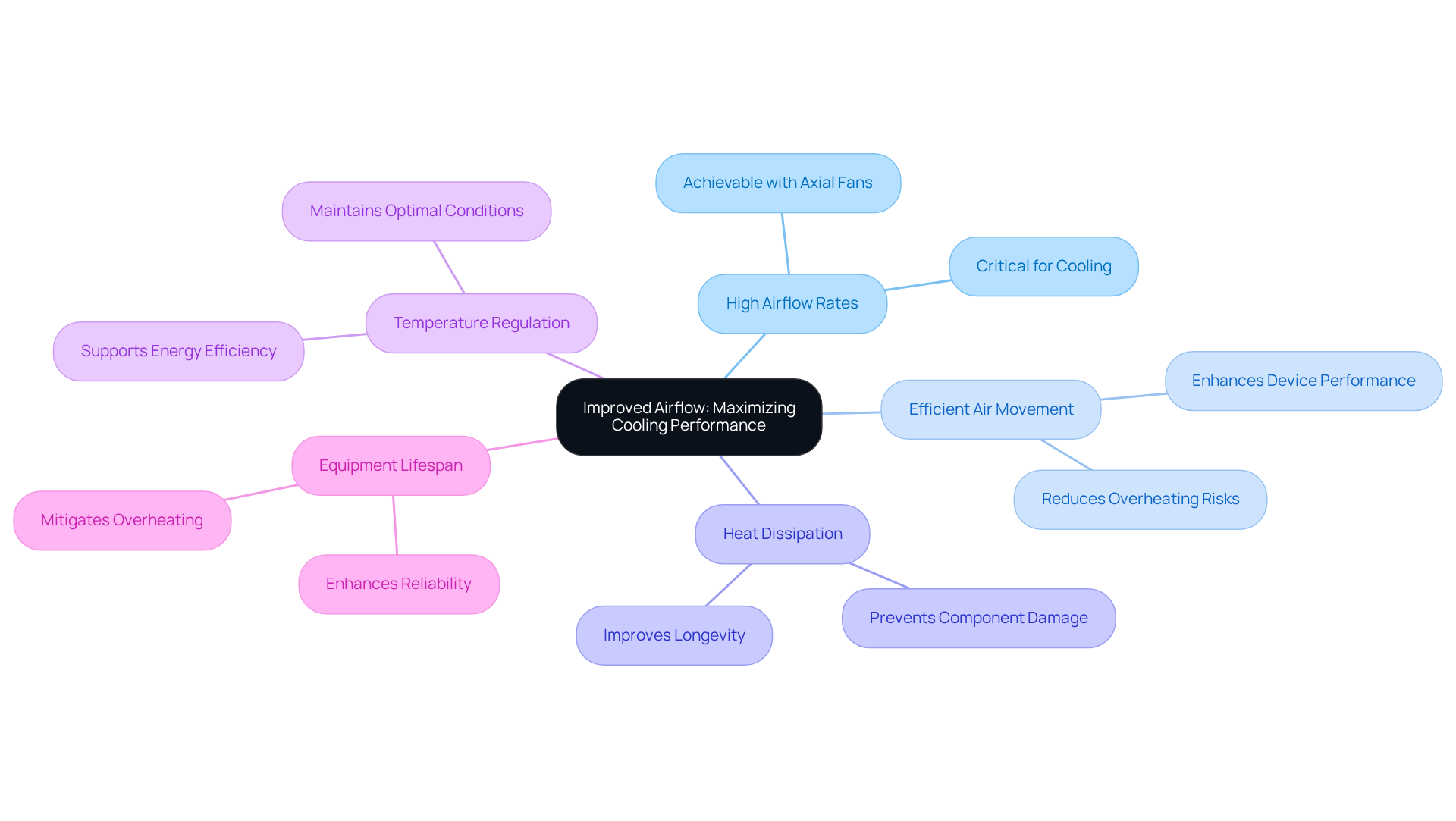
Versatility: Applications of Compact Axial Fans in Diverse Electronics Environments
are integral to a diverse array of electronics environments, effectively serving both consumer and industrial applications. In , they are frequently found in devices such as laptops, gaming consoles, and mobile phones, where effective is crucial to prevent overheating and guarantee optimal performance. In industrial environments, compact axial fans play an essential role in maintaining airflow within , telecommunications equipment, and HVAC systems, which is vital for operational integrity.
The flexibility of small enables engineers to customize cooling solutions for specific requirements, regardless of the sector. For instance, the worldwide market for is anticipated to expand considerably, from $3,061.57 million in 2025 to $4,381.46 million by 2032, propelled by the . By 2025, compact axial fans are anticipated to dominate consumer electronics, highlighting their efficiency and effectiveness in .
Industry leaders emphasize the significance of these devices in enhancing performance across diverse applications. Compact ducted blowers, for example, are engineered to provide , rendering them ideal for space-limited settings. Their versatility not only meets the cooling requirements of modern electronics but also aligns with sustainability goals, as many manufacturers are adopting eco-friendly practices in their production processes.
Routine upkeep is essential for ensuring peak performance of ventilation devices, which includes regular cleaning and checks to prevent airflow blockage. Notable examples of compact axial fans include the EC12025 (120x120x25mm) and EC9225 (92x92x25mm) models, which are designed for high efficiency and low noise operation. The EC12038 model, measuring 120x120x38mm, also showcases advancements in fan design. These devices are increasingly employed in applications ranging from automotive systems to renewable energy solutions, demonstrating their wide-ranging utility and .
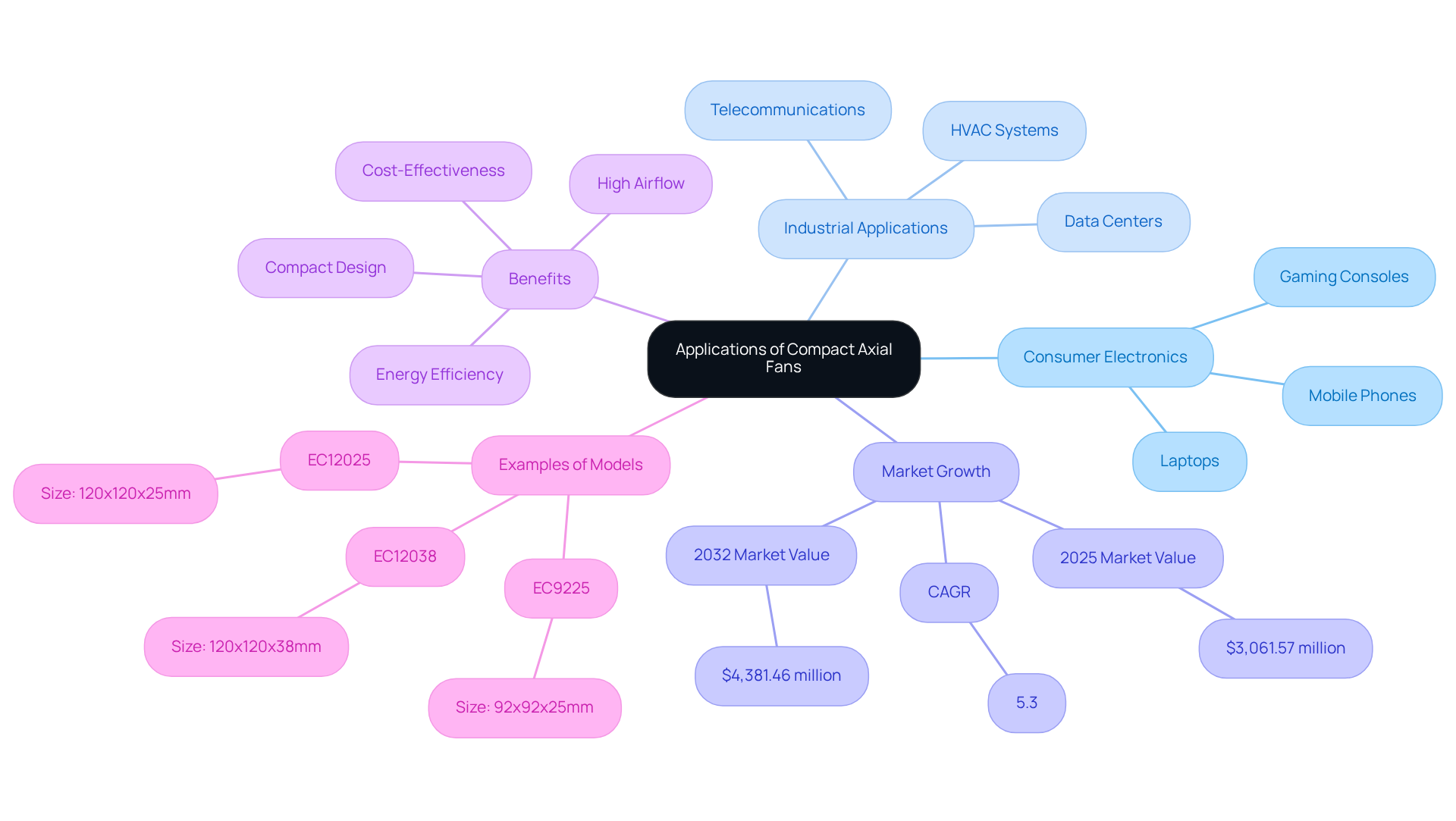
Reliability: Ensuring Consistent Performance with Compact Axial Fans
are engineered to deliver , even in the most demanding environments. Their robust design, combined with high-quality materials, ensures exceptional durability and dependability, making them an ideal choice for the . This reliability is vital, as can lead to and financial repercussions.
Statistics indicate that radial blowers typically boast a lifespan of 10 to 15 years, with advanced models, such as those utilizing ball bearings, achieving a service life expectancy of up to 350,000 hours (MTBF at 40 °C) under optimal conditions. Experts in the field assert that the longevity of significantly impacts operational efficiency, with one stating, “If you are looking for a specific type of ventilator with a particularly , then your choice should fall on a as the bearing system in such devices largely determines its reliability and lifespan.”
In environments where high temperatures, humidity, and vibration are prevalent, the efficiency of becomes increasingly critical, as they and enhance the durability of electronic systems. Regular maintenance practices, including proper lubrication and assessments, are essential for extending the lifespan of these devices, thereby bolstering their reliability in challenging situations.
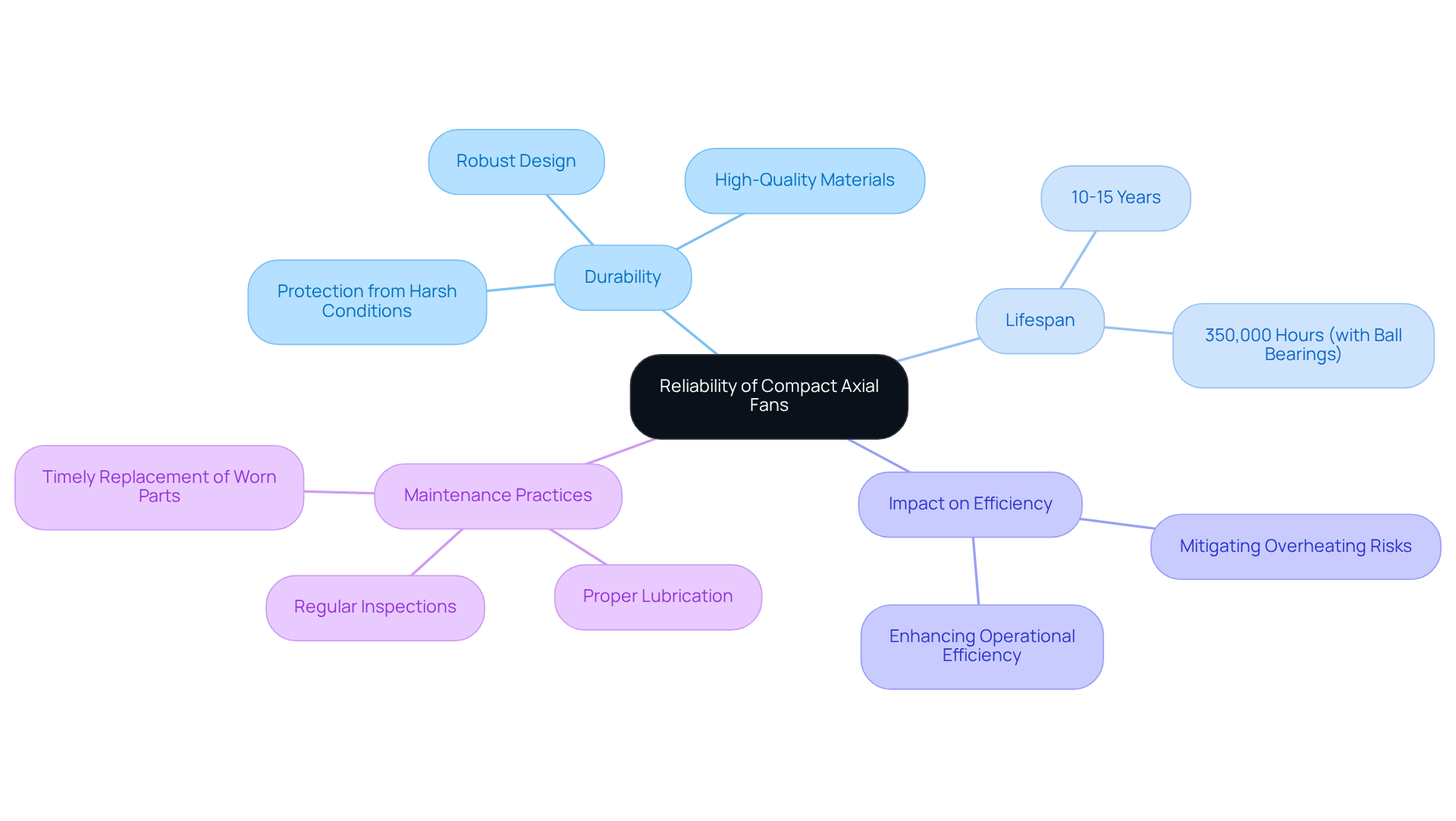
Noise Reduction: Quiet Operation of Compact Axial Fans for Electronics Cooling
are engineered for , making them ideal for environments where is essential, such as offices and living spaces. By utilizing advanced materials and innovative design techniques, these compact axial fans effectively diminish while delivering efficient .
Engineers have observed that can substantially lower overall noise levels, thereby enhancing user satisfaction in noise-sensitive applications. For example, that generates noise, further boosting performance.
A recent case study highlighted a food processing facility that successfully replaced older units with low-noise models, achieving an from 88 dB to 72 dB while simultaneously improving airflow. Typically, axial ventilators produce , showcasing their ability to maintain a comfortable acoustic environment while ensuring optimal cooling performance for sensitive electronics.
Furthermore, , as it helps mitigate noise increases over time.
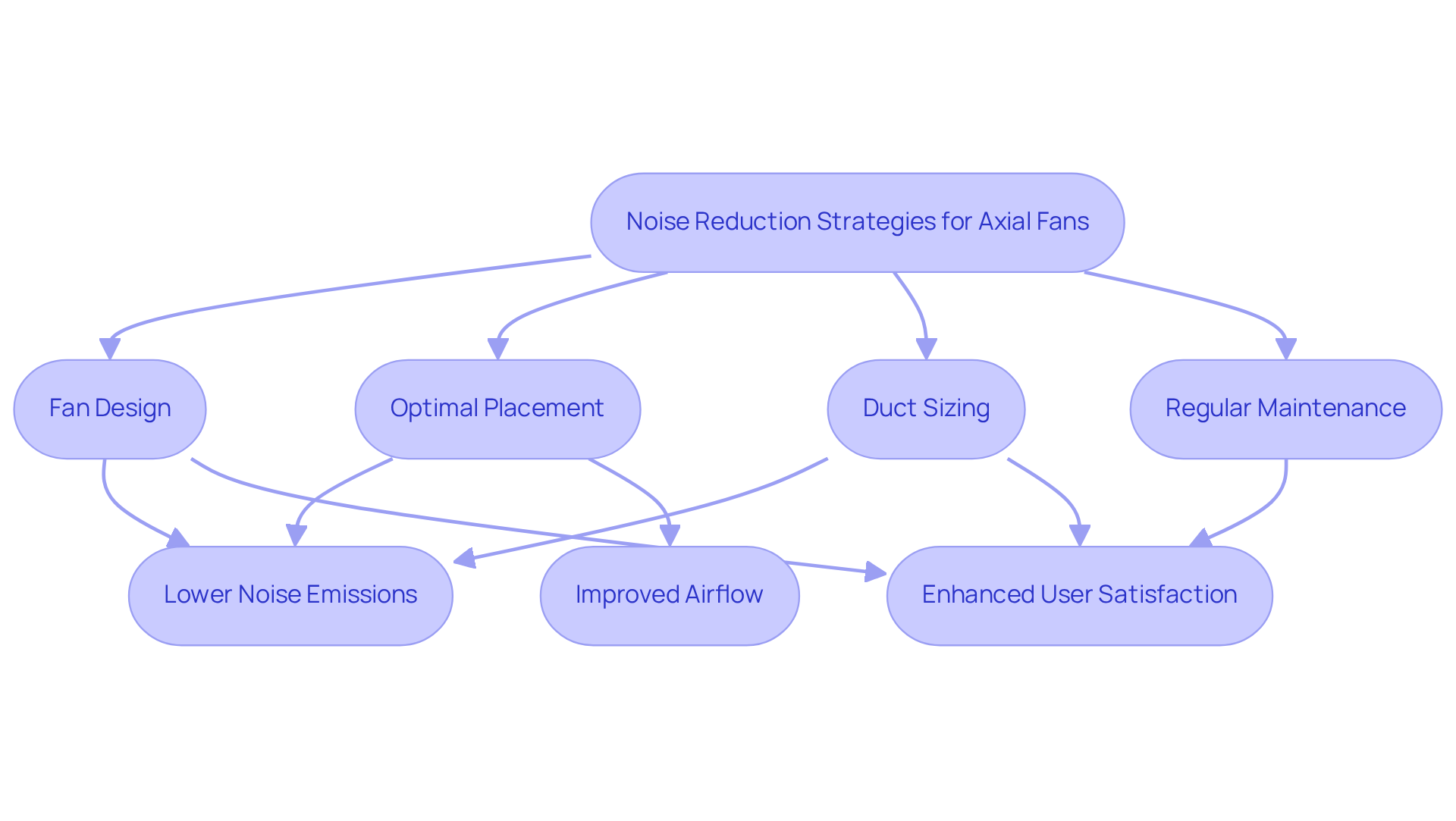
Ease of Installation: Simplifying Integration of Compact Axial Fans in Electronics
are engineered for effortless installation, featuring standardized mounting options and that streamline the integration process. This design simplicity empowers to swiftly incorporate these components into their systems, significantly minimizing and accelerating .
Notably, 57% of stakeholders in the USA have reported utilizing for , underscoring the increasing trend towards efficient solutions. Moreover, a substantial number of engineers have successfully integrated these devices into various electronic applications, with 31% in Asia expressing a willingness to invest more for .
This accessibility not only enhances operational efficiency but also stimulates innovation in product development. As one engineer articulated, ‘The incorporation of small ventilators has streamlined our , enabling us to concentrate more on design and less on installation difficulties.
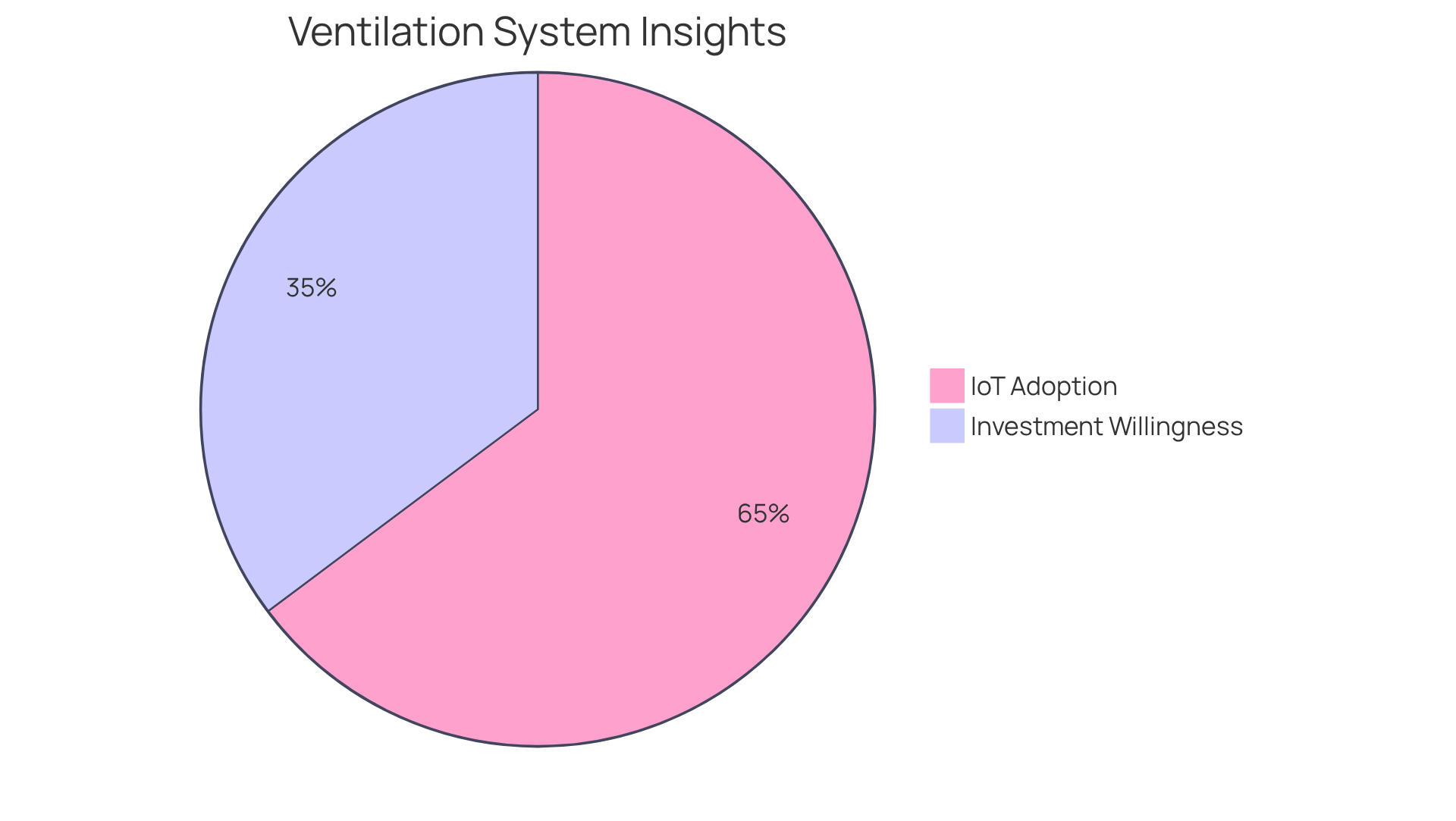
Cost-Effectiveness: Affordable Cooling Solutions with Compact Axial Fans
Compact radial blowers present a cost-effective solution for that upholds performance standards. Their innovative design and significantly lower operational costs, making them an optimal choice for engineers facing . For instance, employing small cylindrical blowers can lead to of up to 30%, allowing companies to allocate resources to other critical areas of development. Industry leaders emphasize the importance of these devices in achieving reliable temperature regulation while adhering to budgetary limits, highlighting their role in enhancing .
The global airflow market was valued at approximately USD 3.5 billion in 2023 and is projected to reach USD 3.85 billion by 2030, reflecting the growing demand for . Furthermore, the market is expected to expand at a CAGR of 5.2% from 2024 to 2033, underscoring the increasing need for energy-efficient and environmentally sustainable refrigeration options. As the demand for economical temperature regulation solutions escalates, emerge as a practical choice, enabling engineers to maintain performance standards without exceeding financial limitations.
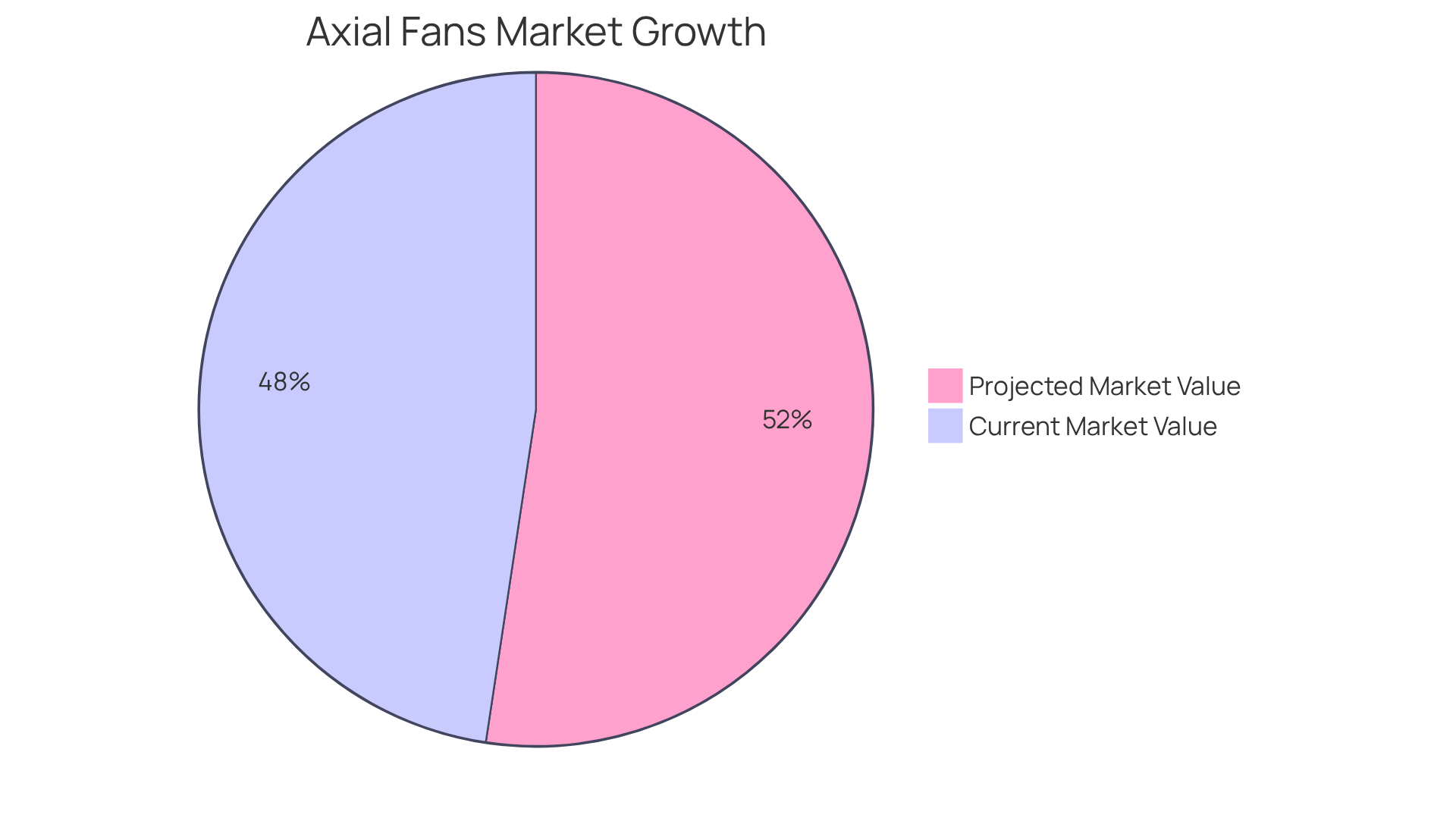
Technological Advancements: Innovations in Compact Axial Fans for Enhanced Cooling
Recent advancements in have revolutionized , significantly enhancing efficiency and performance. Innovations such as facilitate real-time monitoring and control, optimizing airflow according to specific temperature requirements. , coupled with the use of advanced materials, have further refined airflow dynamics, leading to reduced noise levels and increased .
For example, the integration of enables these fans to operate effectively at lower voltages, making them particularly suitable for energy-conscious applications. Engineers who stay informed about these advancements can seamlessly integrate the latest into their designs, ensuring in electronic systems.
As one engineer aptly noted, the evolution of is critical for addressing the demands of modern electronics, where efficiency and compactness are of utmost importance.
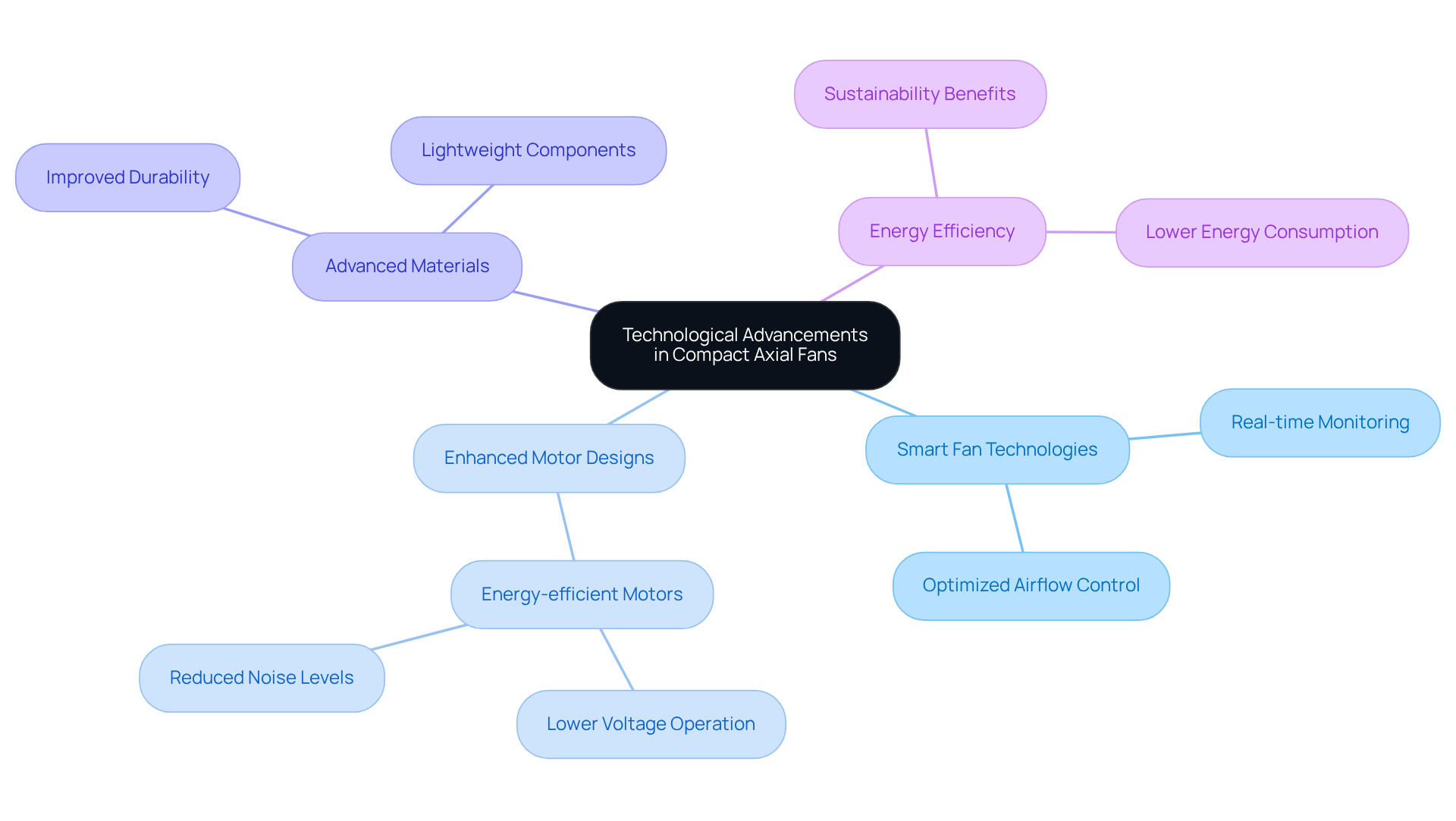
Conclusion
The exploration of compact axial fans underscores their pivotal role in enhancing electronics cooling solutions. Designed with space efficiency and energy conservation in mind, these fans offer a reliable and versatile option for managing heat across a variety of electronic devices. Their compact design not only maximizes airflow but also integrates seamlessly into diverse applications, making them indispensable in today’s miniaturized electronic landscape.
Key insights reveal the substantial benefits of compact axial fans, such as:
- Improved thermal management
- Energy efficiency
- Reduced operational costs
Technological advancements further bolster their appeal, facilitating real-time monitoring and optimized performance. As industries increasingly prioritize sustainability and cost-effectiveness, the adoption of these fans is poised to rise, with projections indicating significant market growth in the coming years.
In light of these advantages, it is essential for engineers and decision-makers to consider the integration of compact axial fans into their systems. Embracing these innovative cooling solutions not only enhances the performance and longevity of electronic components but also aligns with the broader goals of energy efficiency and environmental responsibility. Investing in compact axial fans is not merely a choice; it represents a strategic move towards ensuring the reliability and effectiveness of modern electronics.
Frequently Asked Questions
What does Gagner-Toomey Associates specialize in?
Gagner-Toomey Associates is a leading supplier of compact axial fans specifically designed for regulating the temperature of electronics.
What is the projected market growth for compact axial fans?
The market for compact axial fans is expected to grow from USD 1.2 billion in 2024 to USD 2.5 billion by 2033.
What factors are driving the growth of the compact axial fan market?
The growth is driven by the ongoing trend of miniaturization in electronic devices, particularly in the Asia-Pacific region, which is projected to have a CAGR of approximately 6.5% from 2025 to 2033.
Why are compact axial fans important for electronics?
Compact axial fans are essential for enhancing thermal management, ensuring optimal performance and longevity of electronic components.
How do compact axial fans benefit space-constrained environments?
Their slender profiles allow for seamless integration into devices, enhancing design and functionality without obstructing space, which is crucial in densely populated areas like server racks.
What recent trends are influencing the design of compact axial fans?
Recent trends focus on improving energy efficiency and reducing noise levels, which are vital for modern electronic systems.
Can you provide an example of an innovative compact axial fan design?
The DiaForce diagonal space-saving fan is an example that meets temperature management demands while accommodating limited spaces.
How do compact axial fans contribute to energy efficiency?
They utilize advanced motor technologies that reduce power consumption while enhancing airflow, leading to lower operational costs and a smaller carbon footprint.
What potential savings can organizations achieve by using energy-efficient compact axial fans?
Energy-efficient systems can achieve up to a 70% reduction in power consumption compared to traditional air conditioning units, resulting in significant cost savings.
Why is there a growing advocacy for the use of compact axial fans?
Industry experts advocate for these technologies due to their superior performance, cost-effectiveness, and alignment with sustainable practices, meeting both environmental and economic needs.

